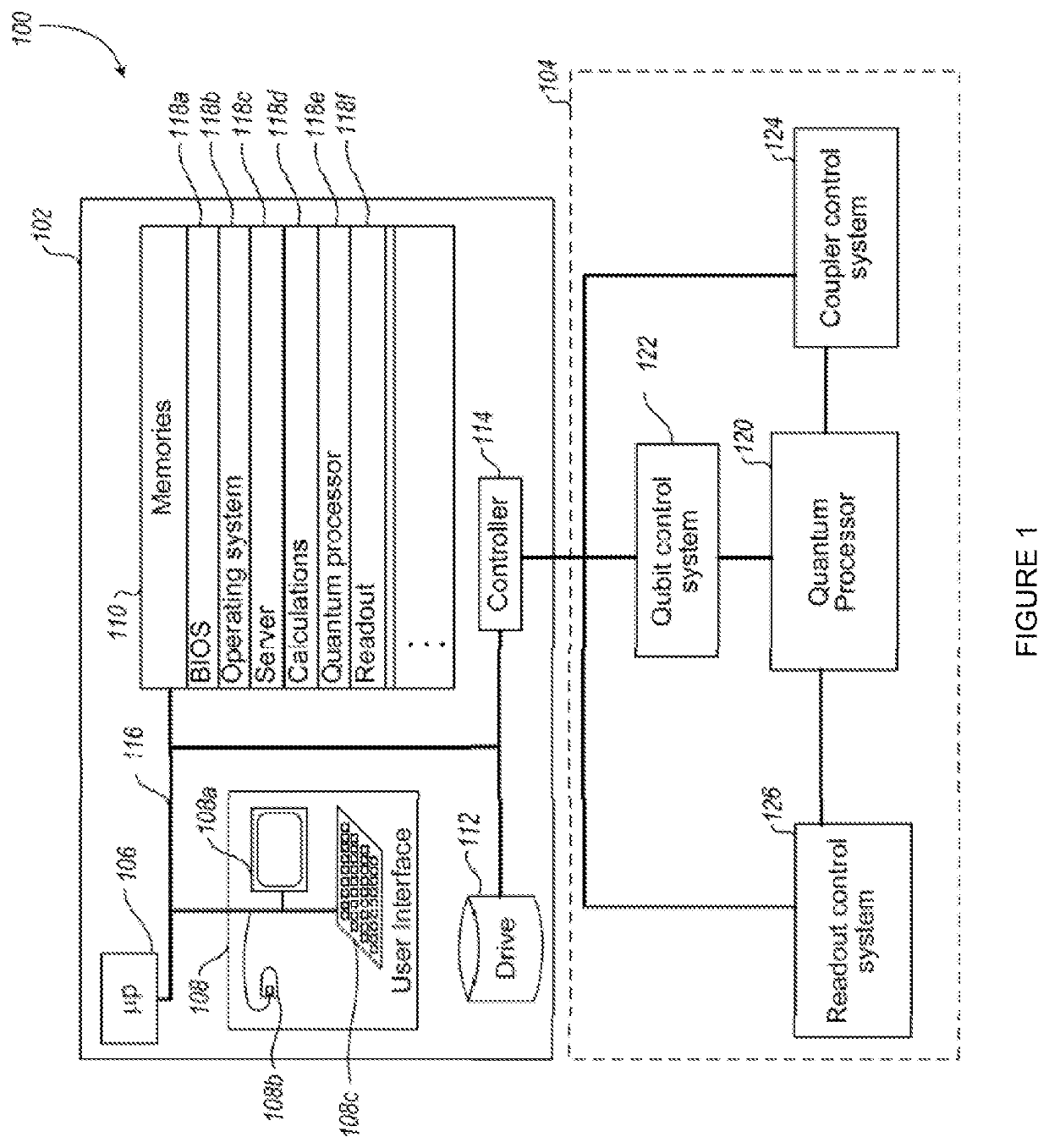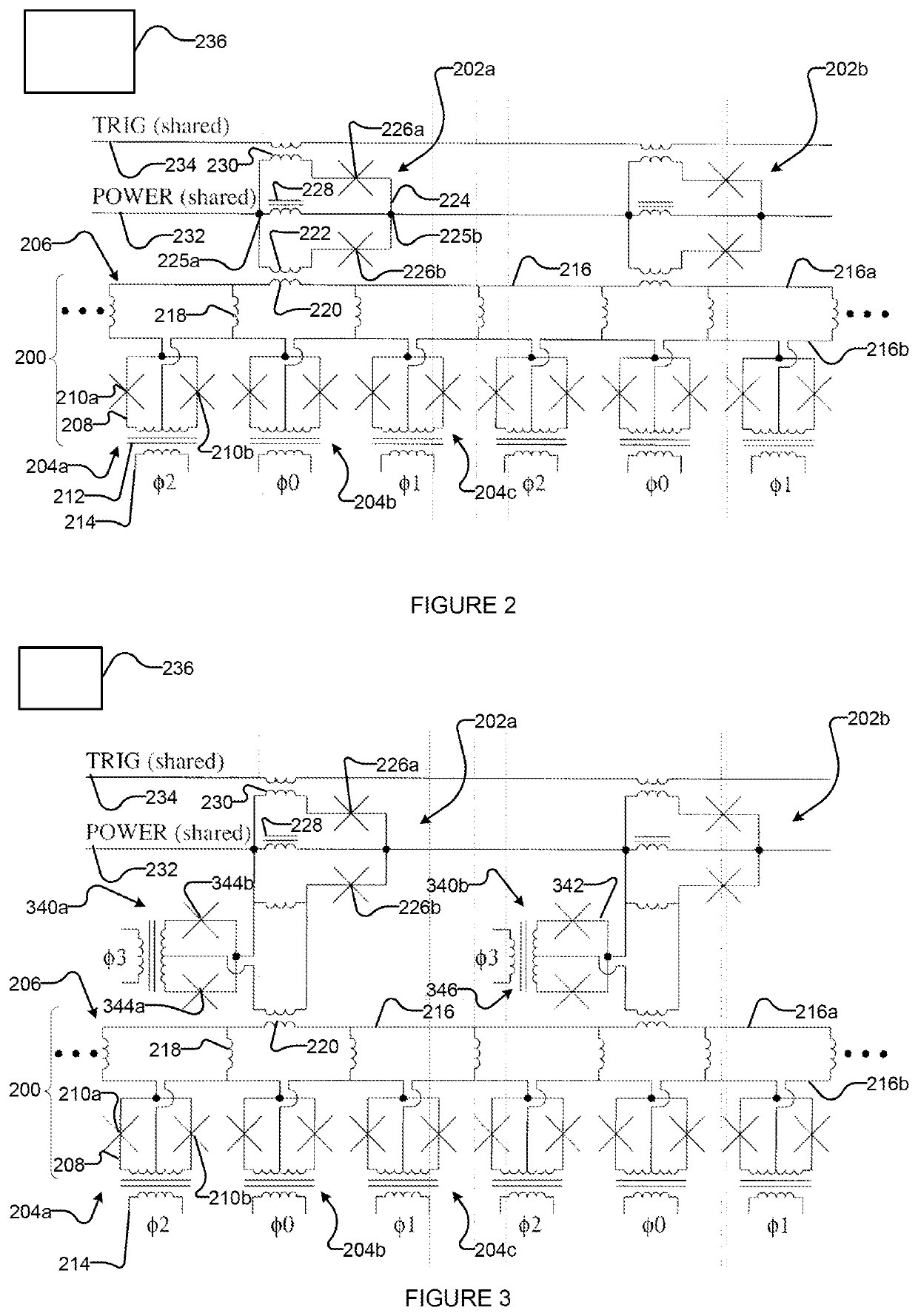Systems and methods for superconducting devices used in superconducting circuits and scalable computing
a superconducting circuit and superconducting technology, applied in computing, digital-analog converters, instruments, etc., can solve the problems of limiting the scalability of quantum processors, limiting the space available for other components on the processor, and -dac designs imposing various costs on the design of the processor
- Summary
- Abstract
- Description
- Claims
- Application Information
AI Technical Summary
Benefits of technology
Problems solved by technology
Method used
Image
Examples
example embodiment 1
[0340] A system, comprising:
[0341]at least a first multi junction superconducting quantum interface device (SQUID) flux-pump comprising: a number N of loops where N is an integer greater than or equal to two and each loop comprises a material that superconducts at least at a critical temperature, each of the loops having a portion shared by a successively adjacent one of the loops, a number M of Josephson junctions, where M is greater than N, each of the portions of the loops shared by the successively adjacent one of the loops interrupted by at least one of the Josephson junctions, each of the loops having a respective storage inductance; and
[0342]a first number N of interfaces positioned with respect to respective ones of the loops to selectively communicatively couple a flux therewith.
example embodiment 2
[0343] The system according to example embodiment 1, further comprising:
[0344]a digital-to-analog converter (DAC) coupled to an endmost one of the loops of the first multi junction SQUID flux-pump, the DAC comprising a loop of a material that superconducts at least at the critical temperature and a storage inductance.
example embodiment 3
[0345] The system according to example embodiment 2 wherein the storage inductance of the DAC is at least one of a magnetic inductance, a kinetic inductance, a Josephson inductance, or a combination of two or more of a magnetic inductance, a kinetic inductance, a Josephson inductance.
PUM
 Login to View More
Login to View More Abstract
Description
Claims
Application Information
 Login to View More
Login to View More - R&D
- Intellectual Property
- Life Sciences
- Materials
- Tech Scout
- Unparalleled Data Quality
- Higher Quality Content
- 60% Fewer Hallucinations
Browse by: Latest US Patents, China's latest patents, Technical Efficacy Thesaurus, Application Domain, Technology Topic, Popular Technical Reports.
© 2025 PatSnap. All rights reserved.Legal|Privacy policy|Modern Slavery Act Transparency Statement|Sitemap|About US| Contact US: help@patsnap.com



